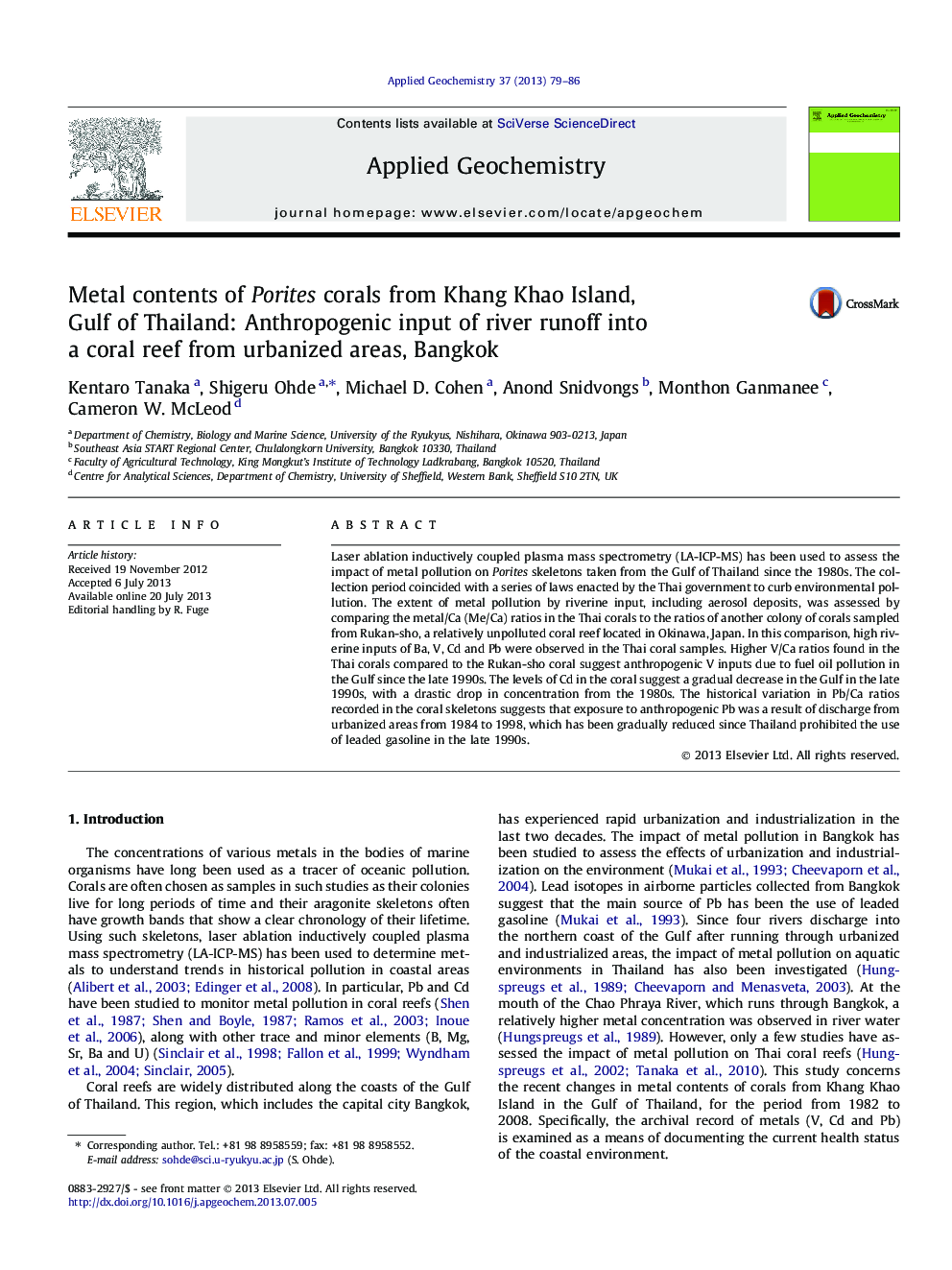| Article ID | Journal | Published Year | Pages | File Type |
|---|---|---|---|---|
| 6335294 | Applied Geochemistry | 2013 | 8 Pages |
â¢High V/Ca in corals from the Gulf of Thailand suggested oil pollution since the 1990s.â¢Decreased Cd/Ca in the corals since 1985 indicated deceasing Cd input in the Gulf.â¢Pb/Ca in the corals reflected the use history of leaded gasoline in Thailand since 1983.
Laser ablation inductively coupled plasma mass spectrometry (LA-ICP-MS) has been used to assess the impact of metal pollution on Porites skeletons taken from the Gulf of Thailand since the 1980s. The collection period coincided with a series of laws enacted by the Thai government to curb environmental pollution. The extent of metal pollution by riverine input, including aerosol deposits, was assessed by comparing the metal/Ca (Me/Ca) ratios in the Thai corals to the ratios of another colony of corals sampled from Rukan-sho, a relatively unpolluted coral reef located in Okinawa, Japan. In this comparison, high riverine inputs of Ba, V, Cd and Pb were observed in the Thai coral samples. Higher V/Ca ratios found in the Thai corals compared to the Rukan-sho coral suggest anthropogenic V inputs due to fuel oil pollution in the Gulf since the late 1990s. The levels of Cd in the coral suggest a gradual decrease in the Gulf in the late 1990s, with a drastic drop in concentration from the 1980s. The historical variation in Pb/Ca ratios recorded in the coral skeletons suggests that exposure to anthropogenic Pb was a result of discharge from urbanized areas from 1984 to 1998, which has been gradually reduced since Thailand prohibited the use of leaded gasoline in the late 1990s.
